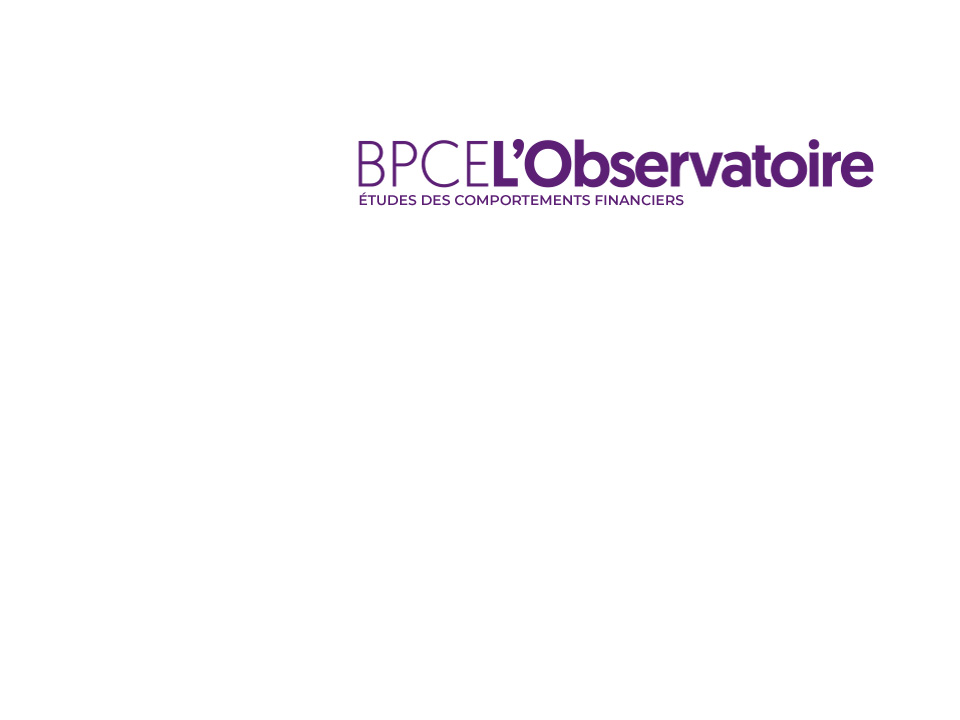

Savings & Investments: French people’s lifestyles will be permanently
[July 2021] According to the BPCE L'Observatoire – Audirep “Savings & Investments” barometer survey, the French concur in thinking that the effects of the pandemic will most likely prove to be long-lasting and lead to a significant change in their lifestyles.


The new patterns of behavior to emerge from the health crisis – consumer spending under tighter control, a new focus on the “immediate world” of the family, housing, and a preference for local or national supply channels… – should leave their mark on spending patterns as consumption picks up again in the wake of the different lockdown periods. As shown in the figures published by the National Institute of Statistics & Economic Studies (INSEE), the rebound in consumer buying and spending intentions in May is not leading to a corresponding clear decline in intentions to save. This apparent paradox is confirmed by the findings of the BPCE Observatoire – Audirep barometer survey. The easing of people’s fears over their personal finances and the lessening of their uncertainties about the short-term economic outlook are not leading to a weakening of savings behavior: like the findings in February 2021, 89% of French people say they are putting money aside (or trying to do so) and 43% feel they do not possess a sufficient cushion of precautionary savings. In fact, beyond the marginal decline in short-term fears, preoccupations related to personal assets, family solidarity or life cycle issues remain acute (with worries persisting about the acquisition of real estate, providing support for children or grandchildren, retirement, or the transmission of assets). In the face of rising fears about the risk of downward social mobility and lower income expectations for themselves or their children, the French are remaining cautious vis-à-vis their savings, and nothing suggests that the revival in business activities will be driven by the consumption of previously accumulated excess savings. The savings rate is expected to decline gradually and to a limited extent despite the upturn in the economic environment.
Household savings rate expected to remain at a high level
Revised forecasts currently offer a more optimistic outlook, even if they depend on when the threshold for herd immunity is reached. French economic growth may well exceed 5.1% in 2021 and 3.9% in 2022 thanks, firstly, to a combination of still unlimited easing of central bank monetary policies on both sides of the Atlantic and the adoption of exceptional monetized fiscal stimulus packages (such as the French economic recovery plan) and, secondly, to the measures taken to preserve the productive fabric and household incomes in France. This catching-up process is expected to fall far short of recouping previous lost earnings between now and the first half of 2022, and will probably fail to prevent a rise in unemployment during the gradual winding-down of the “we’ll do whatever it takes” period. Even if the health situation returns to normal, it is all the less likely that the savings rate will rapidly return to its previous trend of 14.5% as the recent rise in this rate is chiefly due to well-off households whose propensity to consume is lower than average. What is more, the destabilizing effect of what still remain extremely low nominal and real rates of interest (that no longer reflect a legitimate preference for the present time) is liable to encourage households to maintain a high level of savings (possibly to allay concerns about retirement) in order to offset inadequate returns on investments, especially if they anticipate higher levels of inflation. The savings rate is consequently expected to remain high at 19.8% in 2021 and 16.8% in 2022.
Record-breaking financial investments in 2020 with a gradual decline expected by 2022
Measured in terms of net investment effort, i.e. the excess of deposits over redemptions on various financial assets (money flows excluding interest payments and the capitalization of interest), aggregate financial investments (which reached an absolute record of €133.3 billion in 2020) are expected to decline progressively to €113.6 billion in 2021 and, subsequently, to €77 billion in 2022.
These still very high levels correspond to the accumulation of persistent economic fears among individuals about their own futures (rising unemployment and taxation, decline in social protection, especially pensions, etc.) and about the national economy in general. This gradual decline, a response to the shift from forced savings to increased precautionary savings, is expected to result in arbitrages still guided by a wait-and-see attitude, a preference for security and easily available cash at the expense of more risky investments owing to interest rates considered abnormally low. Flows into sight deposits are expected to remain substantially positive (€36.1 billion in 2022), with the prospect of spending the previously accumulated surplus deemed marginal, but these flows will increasingly be made with a view to their subsequent allocation to an investment account. In 2022, it is expected that the shift from sight deposits to passbook savings accounts (€34.5 billion) and to life insurance (€19.5 billion) will continue, a movement that was already considerable in Q1-2021. Life insurance is expected to pursue the recovery it began in 2021 owing to fewer withdrawals from euro-denominated products (-€7.6 billion) and, above all, thanks to the momentum enjoyed by unit-linked savings (€27.1 billion). Unit-linked savings also benefitted from the development of new RER retirement saving schemes whose unit-linked content is higher than the average contract.
In general, greater concern about retirement and the related success of the new PER retirement saving schemes (regarding either 2020 or the intentions expressed for 2021-2022 for both individual and collective investments) should buoy up overall life insurance inflows. Securities, which are expected to be globally negative in 2022 (-€5.5 billion), should again suffer from a form of aversion toward risky investments in 2022 with the rise in share prices and margins narrower for opportunistic strategies, but flows are expected to remain positive in equities alone, owing to a significant broadening of the population of active shareholders.